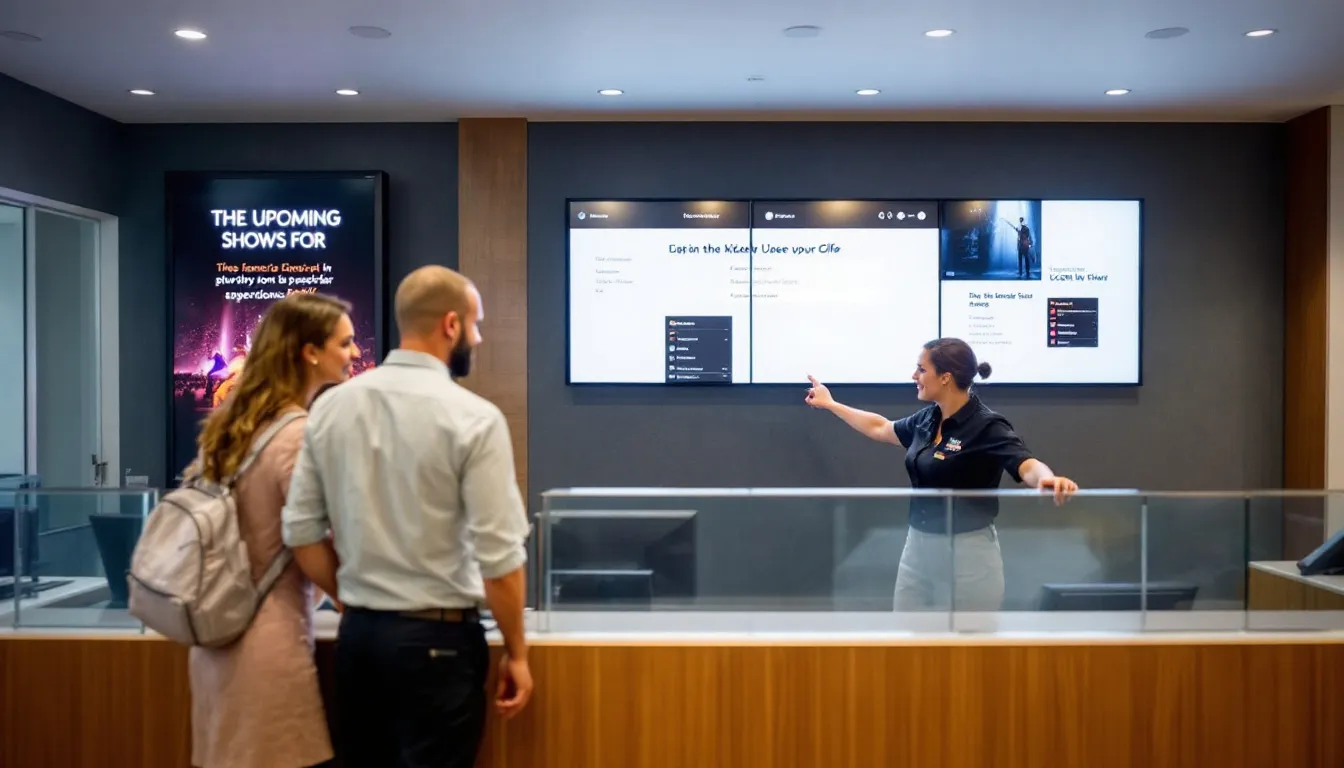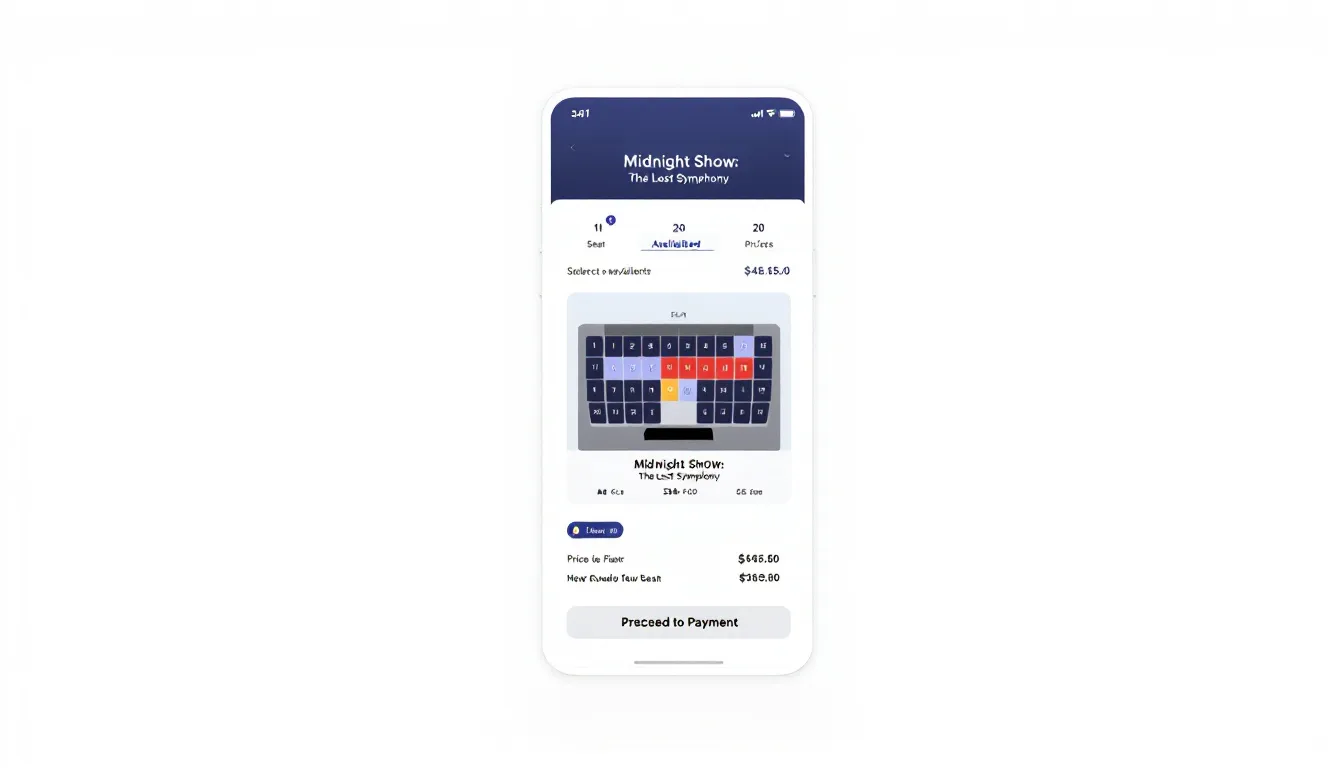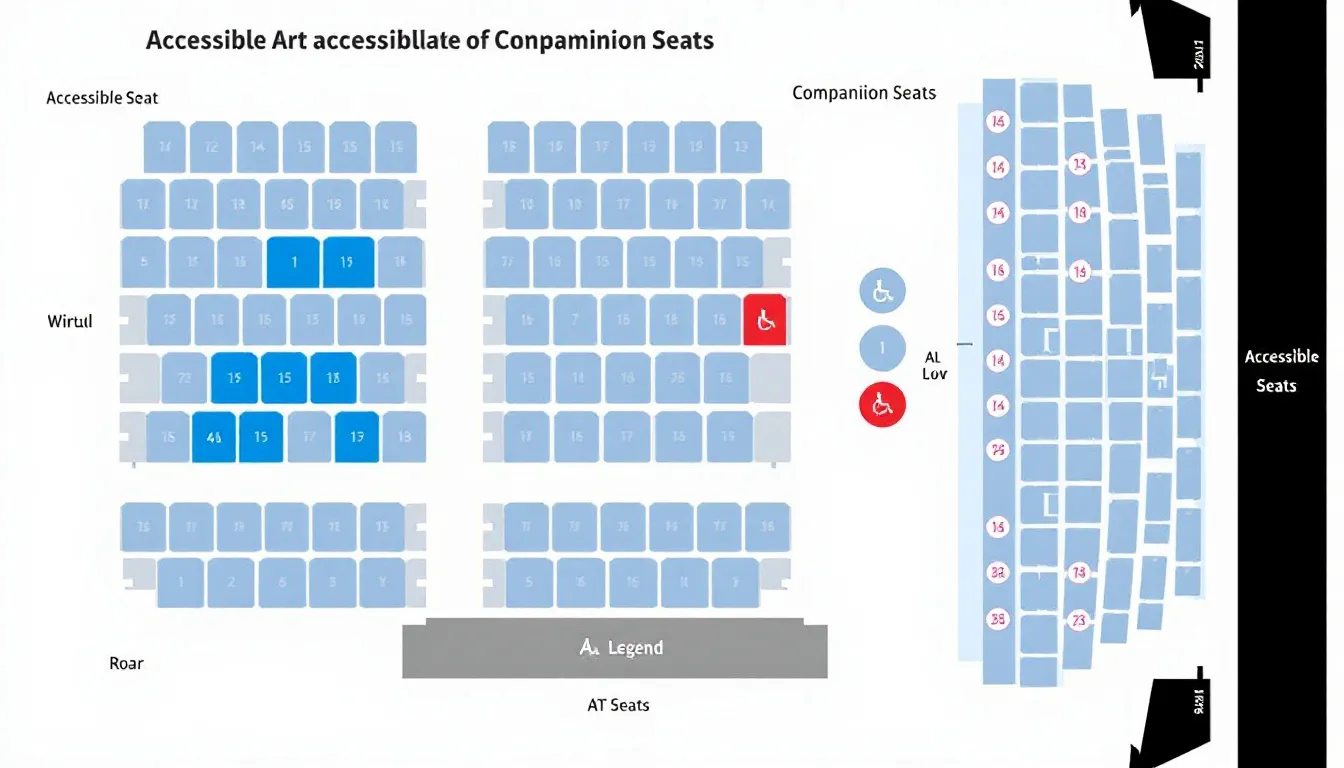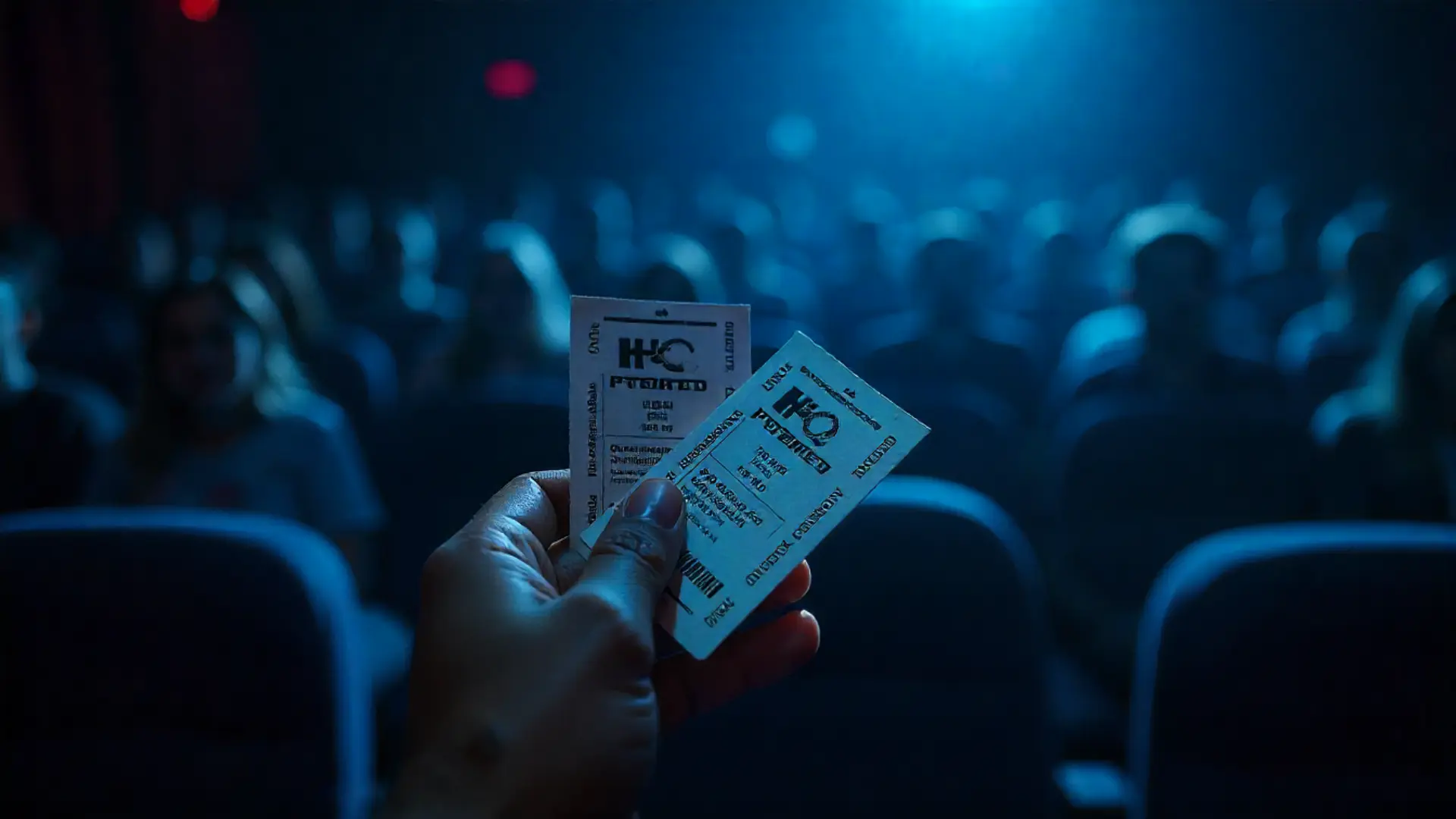The performing arts industry has witnessed a dramatic transformation in how tickets are sold and managed. Over 60% of theater tickets are now sold through online channels, representing a massive shift from traditional box office operations that dominated the industry just a decade ago. Common methods for purchasing theater tickets include official ticketing websites, venue box offices, and third-party resellers. This evolution has fundamentally changed how theaters engage with their audience, manage revenue, and streamline operations.
If you’re comparing platforms, start with our breakdown of Eventbrite alternatives and this arts-first event ticketing platform overview—fees, features, and upgrade paths for modern box offices.
Modern theater ticketing encompasses far more than simple ticket sales. Today’s systems integrate patron management, marketing automation, revenue optimization, and detailed analytics into comprehensive platforms that empower arts organizations to grow their audience and maximize their impact. Many award-winning platforms and organizations have set new standards in the industry, earning recognition for their innovation and excellence. For sold-out shows, third-party resellers can provide access to tickets but at inflated prices. Whether you’re managing a Broadway production, running a community theater, or overseeing multiple arts centers, understanding the landscape of theater ticketing solutions is essential for success. For a buyer-journey walkthrough that mirrors current patron expectations, see our Theatre Sandy Springs guide (seating maps, fees, and mobile flow).
This comprehensive guide will walk you through everything you need to know about modern theater ticketing systems, from basic definitions to advanced implementation strategies. In addition, we’ll highlight the addition of supplementary features and services that enhance core ticketing offerings. Apps like TodayTix and Gametime specialize in selling last-minute tickets, often at a discount. We’ll explore the various types of solutions available, essential features that drive results, and practical considerations for choosing and implementing the right platform for your organization. Modern ticketing solutions also bring new performances and programs to audiences, making it easier than ever to connect people with live theater and arts experiences.
What is Theater Ticketing?
Theater ticketing refers to the comprehensive process of selling, managing, and distributing tickets for live theatrical performances, dance productions, and other performing arts events. At its core, theater ticketing serves as the primary revenue engine for most arts organizations, facilitating the connection between productions and their audience while providing crucial data for future programming and marketing decisions. The primary market for theater tickets consists of official sellers like the venue’s box office and its contracted agents.
Modern theater ticketing has evolved significantly from the traditional box office window model. Today’s systems like Tessitura, PatronManager, and AudienceView represent sophisticated platforms that integrate multiple aspects of arts management. These solutions combine ticket sales with patron relationship management, marketing automation, and financial reporting to create a unified approach to audience engagement and revenue optimization. Resale sites like StubHub allow ticket holders to sell their tickets, potentially at prices above or below face value. In addition, modern ticketing platforms enable organizations to manage each patron’s account, offering personalized assistance and dedicated support services tailored to individual customer needs.

The integration capabilities of contemporary theater ticketing platforms extend far beyond simple sale transactions. These systems connect with venue management software, patron databases, accounting systems, and marketing tools to create a seamless operational ecosystem. Resellers may use bulk purchasing from the primary market or bots to acquire high-demand tickets. This integration allows theaters to track patron preferences, automate marketing campaigns, and generate detailed reports that inform strategic decision-making.
Revenue management capabilities represent one of the most significant advancements in modern theater ticketing. These features help organizations optimize pricing strategies, manage inventory effectively, and maximize revenue through dynamic pricing algorithms. Tiered seating pricing is influenced by the location of the seat, with premium seats priced higher than those further back. By analyzing historical data, current demand patterns, and market conditions, these systems can suggest optimal pricing strategies that balance accessibility with financial sustainability. If you’re designing your stack, begin with this event ticketing platform overview and keep your integration options open with our Developers hub (APIs, webhooks, auth patterns). We also outline how platform fees shape demand-based pricing decisions in our guide to Eventbrite alternatives, with examples you can adapt for previews, rush seats, and premium aisles.
Types of Theater Ticketing Systems
The theater ticketing landscape offers diverse solutions designed to meet the specific needs of different types of performing arts organizations. Discounted subscriptions can provide savings over purchasing individual tickets. Understanding these categories helps ensure you select a system that aligns with your organization’s size, budget, and operational requirements.
Choosing the right ticketing system can also help organizations increase their profit and ensure long-term financial sustainability. AudienceView Professional offers flexible subscription options for performing arts organizations. Operating multiple venues or formats? This event ticketing platform overview covers chain/complex management, cross-venue reporting, and centralised patron profiles.
Professional Theater Solutions
All-in-one platforms designed for professional theaters serve Broadway, Off-Broadway, and regional theaters with sophisticated needs. These comprehensive systems support complex pricing structures, season subscriptions, and high-volume sales operations. Season tickets are subscription packages for repeat patrons that include tickets for multiple events for a single payment. Organizations like Lincoln Center and Kennedy Center rely on enterprise-level solutions that can handle thousands of transactions simultaneously while maintaining detailed patron records and financial reporting.
Educational theater solutions cater specifically to high schools, colleges, and university drama departments. These platforms typically offer simplified interfaces and student-friendly pricing while maintaining essential features like reserved seating, group sales management, and basic reporting. Many educational solutions include special pricing for students and faculty, making theater more accessible to academic communities. In addition, these platforms often support registration for performing arts classes, workshops, and camps, helping organizations grow their audience and revenue.
Community theater software focuses on budget-friendly pricing and user-friendly interfaces that volunteer staff can easily manage. These systems prioritize essential functionality over advanced features, offering reliable ticket sales, basic patron management, and straightforward reporting. The emphasis is on simplicity and affordability, ensuring that smaller organizations can access professional-grade ticketing without overwhelming complexity or cost.
Immersive experience ticketing has emerged as a specialized category serving interactive shows, escape rooms, and VR experiences. These systems accommodate unique booking requirements like time slots, group sizes, and special equipment needs. The flexibility to handle non-traditional performance formats makes these solutions valuable for innovative theater companies exploring new forms of audience engagement.
Multi-venue management systems serve theater chains and performing arts centers operating multiple locations. These platforms provide centralized control over diverse venues while allowing for location-specific customization. Features typically include cross-venue reporting, centralized patron databases, and the ability to manage different seating configurations and pricing structures across multiple locations.
Cloud-Based vs. On-Premise Solutions
Cloud platforms like ShowClix and Brown Paper Tickets offer accessibility from anywhere with an internet connection. These solutions eliminate the need for on-site servers and IT maintenance while providing automatic software updates and backup services. The subscription-based pricing model makes cloud solutions attractive for organizations seeking predictable monthly costs and minimal technical overhead.
On-premise systems provide complete data control for larger organizations with specific security requirements or existing IT infrastructure. These solutions offer greater customization possibilities and can integrate more deeply with legacy systems. However, they require significant upfront investment and ongoing technical support, making them most suitable for well-established organizations with dedicated IT resources.
Hybrid solutions combine local storage with cloud backup capabilities, offering a middle ground between complete cloud dependence and total on-premise control. These systems can operate offline when necessary while synchronizing data to cloud servers for backup and remote access. This approach appeals to organizations that want cloud benefits without sacrificing local control over critical data. If you want a clear view of hosted vs. self-managed trade-offs (fees, portability, SLA), start with our practical guide to Eventbrite alternatives.
Cost comparison between monthly SaaS fees and one-time software purchases varies significantly based on organization size and usage patterns. Cloud solutions typically cost between $50-$500 monthly, while on-premise systems may require $5,000-$50,000 upfront investment plus ongoing maintenance costs. The break-even point usually occurs around 2-3 years, making cloud solutions more attractive for smaller organizations and on-premise systems better for larger, established venues.
Essential Features of Theater Ticketing Software
Modern theater ticketing software must provide a comprehensive suite of features that address both operational needs and patron expectations. These essential capabilities form the foundation of effective ticket sales and audience management.
Real-time seat selection with interactive venue maps represents a cornerstone feature that dramatically improves the patron experience. These systems display accurate seating charts with pricing tiers, allowing customers to see exactly where they’ll be seated and what they’ll pay. The visual interface reduces confusion and increases customer satisfaction while minimizing box office inquiries about seating arrangements. For a real-world example of seat maps and checkout UX, review our Theatre Sandy Springs walkthrough.
Season subscription management has become increasingly sophisticated, offering flexible packages and automatic renewals that reduce administrative overhead. These systems can handle complex subscription offerings, including mix-and-match options, upgrade packages, and automatic billing cycles. The ability to manage subscriber preferences and automatically apply discounts streamlines operations while enhancing patron loyalty.

Dynamic pricing capabilities adjust ticket costs based on demand and show popularity, helping theaters maximize revenue while maintaining accessibility. These algorithms consider factors like historical attendance data, current sales velocity, and time until performance to suggest optimal pricing. Organizations implementing dynamic pricing have reported revenue increases of 12% or more compared to fixed pricing strategies.
Mobile-responsive ticket purchasing has become essential as smartphone usage continues to dominate online activity. Modern systems ensure seamless functionality across all device types, from desktop computers to smartphones and tablets. This accessibility is crucial since mobile ticketing penetration has reached over 60% for live theater in urban markets.
Print-at-home and mobile ticketing options reduce box office workload while providing patron convenience. QR code tickets enable contactless entry, reducing staffing requirements and improving efficiency during busy performance periods. These digital delivery methods also support last-minute purchases and reduce the environmental impact of traditional paper tickets.
Integration with payment processors like Stripe, PayPal, and traditional merchant services ensures secure, reliable transaction processing. Modern systems support multiple payment methods including digital wallets, buy-now-pay-later options, and international payment methods. This flexibility removes barriers to purchase and accommodates diverse patron preferences. In addition, many providers offer customer support services during the evening, ensuring that clients can receive assistance with box office operations beyond standard business hours.
Advanced Marketing Tools
Email marketing automation for show announcements and special offers enables targeted communication with specific patron segments. These systems can automatically send personalized messages based on purchase history, attendance patterns, and stated preferences. Automated campaigns significantly improve engagement rates while reducing staff workload. To move late-cycle inventory, pair your CRM with social: our playbook on boosting live show attendance with TikTok shows how arts orgs drive rush sales without discounting too early.
Social media integration with Facebook Events and Instagram promotional tools extends marketing reach and simplifies promotion management. These integrations allow theaters to automatically post event information, share promotional content, and track engagement across multiple platforms from a single interface.
Patron relationship management (CRM) with purchase history and preferences creates a comprehensive view of each customer’s engagement with the organization. This data supports personalized marketing, helps identify potential major donors, and enables staff to provide exceptional customer support based on complete patron profiles. Organizations are happy with the personalized marketing and support features that help them meet their goals.
Targeted discount campaigns based on attendance patterns and demographics help theaters fill challenging shows while rewarding loyal patrons. These systems can automatically identify appropriate discount recipients and track campaign effectiveness, ensuring marketing efforts generate positive returns on investment.
Analytics and Reporting
Modern theater ticketing platforms offer powerful analytics and reporting tools that are essential for performing arts organizations aiming to streamline ticket sales and deepen audience engagement. With access to real-time data, arts centers can monitor sales trends, track the effectiveness of marketing campaigns, and identify which productions are resonating most with their patron base. These insights enable organizations to make informed decisions about pricing, scheduling, and promotional strategies, ultimately increasing revenue and ensuring that every seat in the house is filled.
The customer support team is always on hand to help organizations interpret data and maximize the value of these tools, allowing staff to focus on creating memorable experiences on stage. By leveraging detailed reports, arts organizations can segment their audience, create targeted marketing campaigns, and engage with patrons in more meaningful ways. This data-driven approach not only boosts ticket sales but also helps build lasting relationships with the community, ensuring that each production reaches its full potential.
Client Management and Support
Exceptional client management and support are at the heart of successful ticket sales and event execution in the performing arts. Platforms like AudienceView Professional equip organizations with a comprehensive suite of tools to manage everything from reserved seating and general admission to specialized dance productions. This flexibility ensures that every event, regardless of size or format, runs smoothly and meets the unique needs of its audience.
A dedicated customer support team provides expert guidance, helping organizations navigate challenges and make the most of the platform’s features. By prioritizing community engagement and offering responsive support, arts organizations can foster a loyal patron base and encourage repeat attendance. These tools also empower staff to efficiently handle ticketing for a wide range of productions, ensuring that patrons enjoy a seamless experience from purchase to performance. Ultimately, strong client management and support drive community success, boost ticket sales, and help organizations grow their impact in the arts.
Community Engagement and Outreach
Community engagement and outreach are vital for performing arts organizations seeking to expand their reach and fulfill their mission. Theatres like The 5th Avenue Theatre have become cultural cornerstones by partnering with local organizations, schools, and businesses to create accessible events and productions that welcome thousands of attendees each year. By focusing on fundraising, marketing, and inclusive programming, arts organizations can break down barriers to attendance and foster a sense of belonging within their communities.
Strategic community engagement not only increases attendance but also strengthens the organization’s impact, ensuring that the arts remain a vibrant and essential part of public life. Through workshops, free events, and targeted outreach, theaters can create opportunities for people of all backgrounds to experience the magic of live performance. By making productions accessible and affordable, and by partnering with community groups, organizations can grow their audience, fulfill their mission, and ensure that the transformative power of the arts reaches as many people as possible.
Benefits for Theater Organizations
Modern theater ticketing systems deliver measurable benefits that impact every aspect of arts organization operations. These advantages extend far beyond simple convenience, creating opportunities for growth, efficiency, and enhanced patron relationships.
Reduced staffing costs result from automating routine ticket sales and customer support inquiries. Box office staff can focus on high-value activities like patron relationship building and complex problem-solving rather than basic transaction processing. Organizations typically see 30-50% reduction in routine administrative time after implementing comprehensive ticketing systems.
Increased revenue opportunities emerge through online sales channels, upselling capabilities, and integrated donation processing. Online sales extend box office hours to 24/7 operation, capturing sales that might otherwise be lost. Upselling features can suggest merchandise, parking, or concessions during ticket purchase, increasing per-transaction revenue.
Real-time reporting on sales performance, popular shows, and revenue projections enables data-driven decision making. These analytics help programming teams understand audience preferences, marketing teams optimize campaign timing, and financial managers maintain accurate revenue forecasts. Access to current data allows for quick adjustments to pricing, marketing, or programming strategies. Ticketing systems also help organizations ensure every event takes place in the ideal venue or location, maximizing the impact and success of each show.
Streamlined operations through automated processes for refunds, exchanges, and transfers reduce administrative burden while improving patron satisfaction. These automated workflows ensure consistent policy application and reduce processing time for routine requests. Staff can handle more complex patron needs while the system manages standard transactions.
Enhanced patron data collection supports future marketing and programming decisions through detailed analytics about audience demographics, purchase patterns, and engagement levels. This information helps theaters understand their community better and make informed decisions about future productions, pricing strategies, and marketing approaches.
Patron Experience and Accessibility
Creating an exceptional patron experience requires attention to usability, accessibility, and convenience throughout the entire ticket purchasing and attendance process. Modern theater ticketing systems prioritize these elements to ensure arts remain accessible to diverse communities.
User-friendly interfaces make ticket purchasing simple for all age groups, from tech-savvy millennials to older patrons who may be less comfortable with digital platforms. Intuitive navigation, clear pricing information, and straightforward checkout processes reduce abandonment rates and increase customer satisfaction. The best systems require minimal clicks to complete a purchase while providing all necessary information.
Accessibility features including screen reader compatibility and large text options ensure theaters can serve patrons with disabilities effectively. These features go beyond compliance requirements to create genuinely inclusive experiences. Audio descriptions of seating charts, keyboard navigation options, and high-contrast display modes make ticket purchasing accessible to the broadest possible audience.

Multiple language support for diverse communities and international visitors extends theater accessibility to non-English speakers. This feature is particularly valuable for theaters in multicultural areas or tourist destinations. Automated translation capabilities can provide basic functionality even for languages not specifically programmed into the system.
Wheelchair accessible seating designation and companion seat booking ensure patrons with mobility needs can easily find and reserve appropriate accommodations. These systems automatically hold companion seats and provide clear information about accessibility features, transfer requirements, and venue amenities.
Group sales management for school trips, corporate events, and special occasions streamlines the process of accommodating large parties. These features can automatically apply group discounts, manage special seating arrangements, and coordinate with development teams for fundraising events. Educational groups particularly benefit from simplified booking processes and student pricing options.
Digital Ticket Delivery Options
QR code tickets for contactless entry and reduced printing costs have become the standard for many organizations. These tickets provide enhanced security features while supporting efficient entry processing. The contactless aspect became particularly important during the pandemic and continues to offer operational benefits.
Will-call services integrated with box office management systems provide options for patrons who prefer traditional pickup methods. These systems maintain digital records while accommodating patron preferences, ensuring no one is excluded from attendance due to technology limitations.
Text message delivery for last-minute ticket purchases enables impulse buying and reduces barriers to attendance. This immediate delivery method supports rush sales and helps fill seats that might otherwise remain empty. The convenience factor often leads to increased customer satisfaction and repeat purchases.
Secure PDF tickets with anti-fraud measures and unique identifiers protect organizations from revenue loss while maintaining patron convenience. These security features include watermarks, unique barcodes, and verification systems that prevent unauthorized reproduction or transfer.
Implementation and Cost Considerations
Understanding the financial and operational requirements of theater ticketing implementation helps organizations make informed decisions and budget appropriately. The total cost of ownership extends beyond initial setup fees to include ongoing operational expenses and staff training.
Setup fees range from $500 for basic systems to $10,000+ for enterprise solutions, depending on customization requirements, data migration needs, and integration complexity. Community theaters typically invest $500-$2,000 in setup, while regional theaters may spend $3,000-$8,000, and major venues can expect $10,000 or more for comprehensive implementations.
Monthly subscription costs typically fall between $50-$500 depending on venue size and feature requirements. Basic community theater systems start around $50-$100 monthly, while mid-size venues usually pay $200-$350, and large organizations may invest $400-$500 or more for premium features and support.
Transaction fees usually range from 2-4% plus credit card processing charges, creating ongoing costs that scale with sales volume. These fees vary by platform and can significantly impact total cost of ownership. Some systems offer lower transaction fees in exchange for higher monthly subscriptions, making cost comparison complex.
Training requirements for box office staff and technical support availability vary significantly between platforms. Comprehensive training programs ensure staff can utilize system capabilities fully, while ongoing support availability affects operational continuity. Organizations should budget time for initial training and ongoing education as system features expand.
Data migration services from legacy systems to new platforms require careful planning and often professional assistance. The complexity of migration depends on data quality, system compatibility, and historical record requirements. Professional migration services typically cost $1,000-$5,000 but can prevent data loss and ensure smooth transitions.
Popular Theater Ticketing Platforms
The theater ticketing market features several established platforms, each with distinct strengths and target audiences. Understanding these options helps organizations select solutions that align with their specific needs and growth plans.
Tessitura Network serves major theaters like Lincoln Center and Kennedy Center with enterprise-level functionality. This comprehensive platform combines ticketing, fundraising, marketing, and financial management in a single system. Tessitura’s strength lies in its ability to handle complex operations and provide detailed analytics, making it ideal for large organizations with sophisticated needs.
PatronManager (Salesforce) is used by over 2,000 arts organizations nationwide, offering cloud-based convenience with powerful CRM capabilities. Built on the Salesforce platform, PatronManager provides excellent integration with marketing automation and fundraising tools. The system excels at patron relationship management and is particularly strong for organizations focused on donor development and community engagement.
ThunderTix specializes in smaller venues and community theaters with affordable pricing and user-friendly interfaces. This platform prioritizes ease of use and essential functionality over advanced features, making it accessible to volunteer-operated organizations. ThunderTix offers strong customer support and straightforward implementation processes.
Spektrix is popular among UK theaters and expanding to North American markets with innovative features and modern design. The platform emphasizes user experience and provides excellent mobile functionality. Spektrix’s strength in marketing automation and audience analytics makes it attractive to organizations seeking growth.
Vendini (now part of AudienceView) focuses on mid-size performing arts venues with balanced functionality and pricing. The platform offers good integration capabilities and strong reporting features. AudienceView’s acquisition of Vendini has created opportunities for enhanced functionality and broader market reach.
Each platform offers unique advantages, and the best choice depends on organizational size, budget, technical requirements, and growth plans. Many platforms offer trial periods or demonstrations that allow organizations to evaluate functionality before making commitments.
The global event ticketing market, valued at approximately $67 billion in 2022, is projected to exceed $95 billion by 2027, driven largely by digital adoption and enhanced customer expectations. Theater organizations that invest in modern ticketing solutions position themselves to capture this growth while providing exceptional experiences for their patrons. For example, with several highly anticipated musical debuts and performances scheduled for September, having robust ticketing systems in place is crucial for managing increased demand and ensuring smooth operations during this busy period.

Modern theater ticketing represents far more than a simple sales tool—it’s a comprehensive platform for audience engagement, revenue optimization, and operational efficiency. Organizations that embrace these technologies create competitive advantages through improved patron experiences, streamlined operations, and data-driven decision making.
The key to successful implementation lies in selecting a system that matches your organization’s current needs while providing room for growth. Whether you’re managing a small community theater or overseeing a major arts center, the right ticketing solution can transform your operations and help you better serve your mission of bringing live performance to your community.
Take time to evaluate your current ticketing processes, identify areas for improvement, and research platforms that address your specific challenges. The investment in modern theater ticketing technology pays dividends through increased revenue, operational efficiency, and enhanced patron satisfaction that supports long-term organizational success.
Future of Theater Ticketing
Ready to modernize your box office? Explore our event ticketing platform, list your season on the Events & Gigs calendar, or talk to us about integrations and data migration.
The future of theater ticketing is being shaped by rapid technological innovation and evolving audience expectations. As performing arts organizations embrace new tools and adapt to trends like online streaming and social media engagement, they are finding fresh ways to connect with their communities and drive ticket sales. The integration of advanced analytics, client management, and community engagement strategies allows theaters to better understand their patrons and deliver personalized experiences that keep audiences coming back.
Whether presenting a Broadway blockbuster or a local community production, the key to future success lies in creating seamless, engaging experiences for every patron—from the moment they purchase tickets to the final curtain call. As the industry continues to grow, organizations that prioritize innovation, creativity, and a deep commitment to audience engagement will be best positioned to thrive. By leveraging the latest tools and maintaining a strong focus on community, the performing arts can continue to inspire, entertain, and unite audiences for generations to come.
